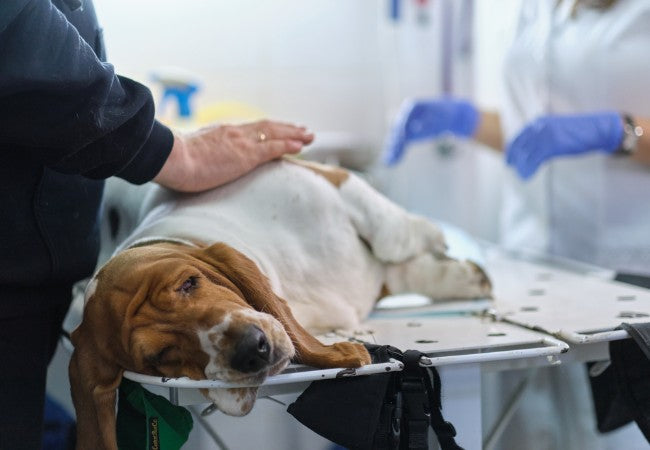Veterinary Guide to Ovarian Remnant Syndrome in Dogs 2025 🐶🩺

In this article
Veterinary Guide to Ovarian Remnant Syndrome in Dogs 2025 🐶🩺
By Dr. Duncan Houston BVSc
🔍 Introduction
Ovarian Remnant Syndrome (ORS) occurs when functional ovarian tissue remains after spaying, leading to continued heat cycles and potential health risks. This 2025 guide covers its causes, signs, diagnosis, laparoscopic and open surgical treatments, and prevention strategies. 🩺
💡 What Is Ovarian Remnant Syndrome?
ORS is a condition where viable ovarian tissue persists in the abdomen post-ovariohysterectomy or ovariectomy—either due to surgical error, dropped tissue, or ectopic ovarian fragments.
🧬 Who’s at Risk?
- Spayed females show signs of a heat cycle months to years later.
- Cats are more commonly affected than dogs, but ORS is notable in dogs too (1–2% incidence).
- Dogs with previous ovarian tumors—remnant tissue may linger and increase cancer risk.
🚨 Signs & Symptoms
- Vulvar swelling, bloody or serosanguineous discharge.
- Attraction to males, standing to be mounted, and marking behaviors.
- Possible secondary conditions: stump pyometra, false pregnancy, mammary or ovarian tumors.
🔬 Diagnostic Process
- History & clinical signs: cycles appearing long after spay raise suspicion.
- Vaginal cytology: indicates estrogen influence with superficial cell dominance.
- Hormone assays: elevated progesterone, AMH positive, or low LH confirm functional ovarian tissue.
- Ultrasound: visualizes remnants near ovarian pedicles or ectopic sites, with variable sensitivity.
- Diagnostic tests: hCG or GnRH stimulation followed by a progesterone spike confirms ORS.
🏥 Treatment Options
1. Exploratory Surgery (Gold Standard)
- Best timed during estrus/diestrus when tissue is most visible (~15–60 days after cycle onset).
- Open laparotomy explores ovarian pedicles and the abdomen; laparoscopic removal is effective with a lower recovery time.
- All identified tissue was removed and sent for histopathology to confirm ovarian origin.
2. Medical Management
- If surgery isn't possible, megestrol acetate or mibolerone may suppress heat cycles, but carry side effects.
📈 Prognosis & Follow-Up
- With complete removal, clinical signs resolve—prognosis is excellent.
- Risks of persistent estrogen include stump pyometra and tumors if untreated long-term.
- Follow-up: postoperative exams at 2 weeks; hormone/stump checks and abdominal scans as needed.
🛡 Prevention & Owner Tips
- Ensure complete ovary removal during spay—double-clamping and thorough visualization help.
- Consider the laparoscopic approach—fewer reported cases of ORS.
- Monitor for late-onset signs even years post-spay—clinical vigilance matters.
🔧 Tools & Services Support
- Ask A Vet App: Quick support to recognize estrus patterns post-spay and guidance on next steps 📱
✅ Final Thoughts
While rare, Ovarian Remnant Syndrome can cause recurring heat behavior and serious hormonal complications. Timely diagnosis, strategic laparoscopic or open removal, and histopathology ensure cure and prevent further health risks. Proactive surgical practices and tools like AskAVet, maintain long‑term reproductive health in 2025 and beyond. 🐾❤️
Download the Ask A Vet app today for on-demand expert advice—from identifying subtle signs to planning laparoscopic removal and long-term care. 🩺📱






